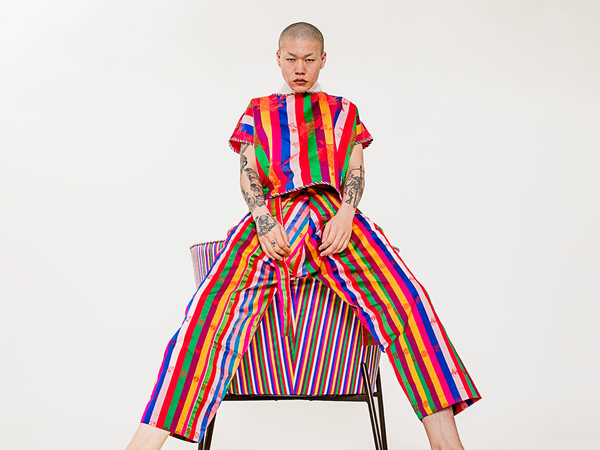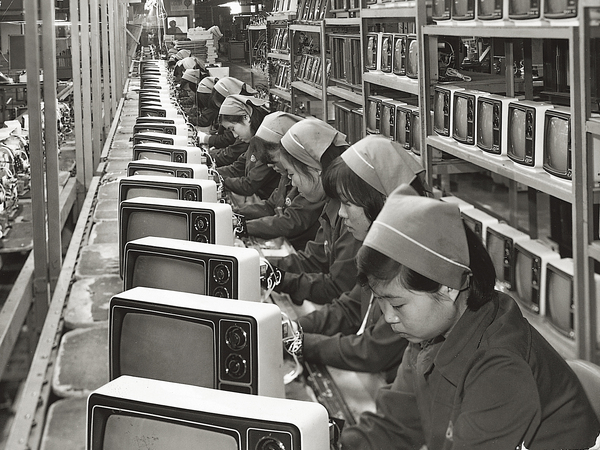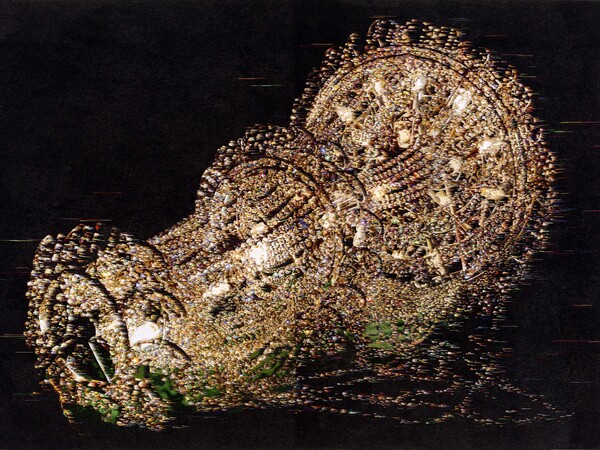In ’93, the South Korean government realizes that Jurassic Park He collected more than the annual production of Hyundai car, he understands that the future of the country would not only have gone from production, but from culture.
From that consciousness a national strategy was born that today has a specific name: HALYU, L ” Onda Coreana ‘.
A global phenomenon that unites among the large “K” products of music, cinema, fashion, cosmetics and technology that have arrived in our houses and devices, and that today is the protagonist of the exhibition HALYU! L’nda CoreananaIn program Al Museo Rietberg From Zurich to August 17, 2025The only phase in continental Europe.
Unknown artist, parade with books and objects in a study, 19th century, private collection.
The exhibition is the result of an operation of soft power Built three years ago at the table and born thanks to the collaboration of Ministry of Culture, Sport and Tourism of South Korea and the Victoria & Albert Museum of LondonWith the intention of telling the world the ability to view a country originally that modernity has embraced with a lot of spirit of sacrifice, first in terms of technological and subsequent cultural development, among the award -winning manager of the dictatorial and democratic governments that have followed.
Why HALYU’s secret is his deep bond with tradition. In Korea, Confucian values, ancient rituals and the feeling of the community continue to shape contemporary society. Aesthetics, discipline, respect for the other and for the authority they have roots in a culture that improves history as much as the future.
“In South Korea there are very strong social codes rooted in Confucianism that in fact also regulates social behavior in our time. There is a lot of respect for the elderly or the elderly. Only half a year older to be respected more. This approach is also reflected in language: in Korean we must speak with people in accordance with age or position” he says “” “” Khanh Trinh, curator of the Japanese and Korean collections in the Rietberg Museum.
It was since 1961 that a great exhibition was missing in Europe in Korea: exactly that year, immediately after the coup d’état by General Park Chung-hee, the V&A had kept the baptism National art treasure of KoreaAn exhibition that South Korea first presented to the European public as an independent country.
Today, Korea is wearing the clothing of a global player in the showcase in Zurich, able to compete with the Global Entertainment Giants. The papers are all in order. Yet the moral codes and the discipline that Korea helped to recover quickly in the 60s and 70s are strongly questioned by the younger new generations that do not see the feeling that they are sacrificing their entire lives for work and success and to ask for more free time for themselves, causing a lot of intergenerational tension.

And that is why the question is: how will South Korea be able to benefit from an investment of more than sixty years in the long run?
HALYU, between identity and modernity
HALYUterm derived from Chinese (hall = COREA, yu = Onda), indicates the planetary diffusion of the South Korean pop culture from the 90s.
TV series, K-pop, cosmetics, fashion and Korean food have become part of the global imagination, thanks to an overwhelming mix of aesthetics, discipline and innovation. The housing of the products is the universal of Western culture, the soul remains the Korean. A transplant that has made its fruits.

Squid game. An original Netflix © 2021 Netflix series. All rights reserved
It is not without reason that the iconic pieces of the exhibition – the reconstruction of the bathroom of the film Parasite and the costumes of the first season of Squid game – They celebrate Cinema and Korean TV series, who have become symbols of a nation who knows how to tell each other with courage and visual refinement. Able to win prizes and prizes worldwide.
Through globalization and digitization, HALYU builds a bridge of cultural connectivity that is intended to become the most powerful form of Korea’s confirmation on the international chessboardalbeit with some limitations.
It is a wave that is able to conquer linguistic and cultural barriers, who conquers millions of fans around the world.
As Khanh Trinh explains: “Korean culture is an explosive mix of Chinese, Japanese, American and local traditional influences. It is this hybrid that makes it familiar and universal at the same time. It is a culture that welcomes, transforms and answers.” And he adds: “The Korean costume of the Hanbok is very typical, the traditional dress that is re -interpreted today in a modern key. In Korea, it does not disappear: it evolves, mixes, runs again.

Samsung Electronics TV assembly line, 70s. But the Samsung Innovation Museum
Dictatorship, censorship, rebirth
The history of Hallyu is intertwined with that of South Korea, that After the war in the 1950s, he was one of the poorest countries in the world. Led through military regimes for decades, he has experienced an accelerated and conflicting transformation. Censorship has long been a tool for social and cultural control: cutbacks in films, forbidden to music, even punishing for the “Western” clothing of girls and long hair of the boys.
Only with the Democratization of 1987 started to thrive the cultural industry. But as Khanh Trinh notes: “Censorship was and still exists. Creatives always find a way to express themselves. The films and Korean TV series are also a reflection of the tensions of society: show inequalities, the struggle between classes, social pressure.”
The exhibition: A trip to four acts
The image of the “Opens the dances of the exhibitionfinger heart“, Popularized by the K-pop idols, to underline their message against hatred. Furthermore, they are reproduced in the Senate on a wall in loop scenes taken from the global hit ‘Gangnam -style “ In PsyTo remember how the K-pop was able to climb the top positions in the American and British charts.
Welcome to aesthetics K. Any imagination is needed to upload images and objects that are part of the story of their original bright colors that seem a bit unsaturated in the set -Up. But we’ll continue in order.
Historical objects, photos and old technologies tell about the rooms of the first part of the exhibition, the very fast transformation of a country, between economic flowering and social tensions, to remember that South Korea is the laboratory of the Zo -driven “compressed modernity”, where smartphones, high fashion and conucons.
K-pop idols are the product of a rigorous production system and a global and active digital community. Knowingly, original outfits of groups such as Aespa and Ateez tell the communicative power of music that is also identity and company.
The K-Beauty and K-Fashion show how Korea also shows an aesthetic model based on care, harmony and innovation today. Ideals of beauty rooted in Confucianism – where self -care is a moral question and not of vanity – are converted into global tendencies.

A bridge between Korea and Switzerland
The sour phase of the exhibition (after London, Boston, San Francisco and Zurich will be the turn of Australia) presents a room that focuses on the Korean artistic tradition, with Buddhist and Shamanic works, alongside contemporary video installations such as Nam June Paik. Among the novelties, also an 18th-century lunar pot and a Swiss-Corean designer dress Nina Yuun, which combines Korean crafts and local materials.
Con HALYU! L’nda CoreananaIl Museo Rietberg He invites us to discover how a nation has been able to transform his complex story into a powerful contemporary story, where tradition and innovation dancing dances capable of the rhythm of the K-pop. An invitation to visit South Korea before it is overwhelmed by the new wave of generation.
#Rietberg #Museum #Zurich #South #Korea #told #pop #history #censorship #Arte.it




